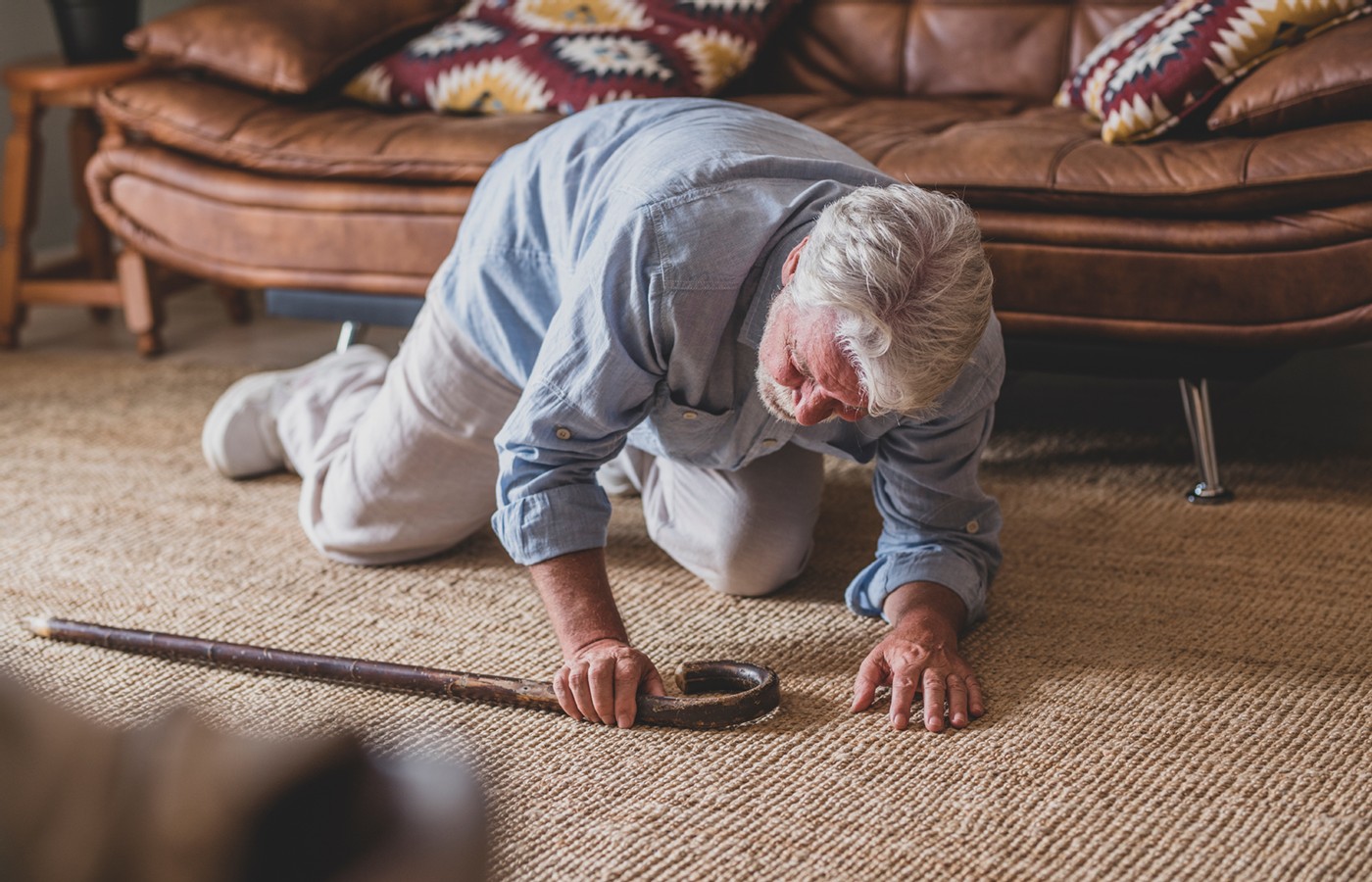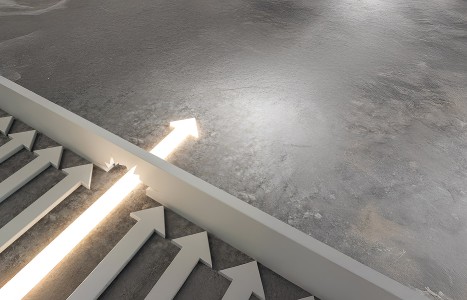You became a chiropractor to serve people, not an insurance company. You deserve to run a business that aligns with your values, supports your family and lights you up. Cash-based care isn’t just a pricing model – it’s a philosophy rooted in freedom, trust and respect for your patients and for yourself. Here's why - and how - to do it.
I've Fallen and I CAN Get Up
- Age-related impaired performance with floor-to-stand transitions is particularly troublesome following a fall.
- Fortunately, regardless of your age, the ability to perform floor-to-stand transitions can be improved with a series of simple exercises.
- A great way to restore core and hip strength is with a modified DNS core exercise that is a part of a program called the dynamic neuromuscular stabilization approach.
If you were around in the ‘80s and ‘90s, you probably remember those medical alert commercials in which an older woman calls for help because she can’t stand up after a fall. We take it for granted when we’re young, but the ability to stand up from the floor becomes progressively more difficult as we get older. While people in their 20s can stand up from the floor in just a few seconds, it takes the average 60-year-old four seconds to stand up, and it can take over 10 seconds for a 70-year-old to get up off the floor.1
The age-related impaired performance with floor-to-stand transitions is particularly troublesome following a fall, as nearly 50% of people over the age of 70 who fall are unable to get up on their own.2 What is surprising is that a significant percentage of the people who fall are not injured; they just can’t get up by themselves.
For people who live alone, this can have disastrous consequences.3 Remaining on the floor for an extended length of time can result in dehydration, pressure sores, delirium, rhabdomyolysis, and ultimately renal failure.4 One study of 125 people over the age of 65 who fell in their own homes found that half of the people who were unable to get up for more than an hour (referred to as long lies) were dead within six months.5
Fortunately, regardless of your age, the ability to perform floor-to-stand transitions can be improved with a series of simple exercises. According to the World Guidelines for Fall Prevention, published in 2022,6 there is strong evidence that functional exercise programs can teach people to get up on their own once they have fallen. While some people have difficulty getting off the floor because of medical conditions such as vertigo, postural hypotension, prior injuries and/or arthritis, the majority of people who are unable to stand up have age-related deficits in hip and/or core strength that can be corrected with appropriate exercises.
The Side-Sit Technique
While everyone has their own preferred way of moving during floor-to-stand transitions, the most common movement pattern is the side-sit pivot technique.4 (Fig. 1) This technique is particularly popular with older adults, as it allows them to maintain ground contact with their upper and lower extremities, which distributes force over a wider range of muscles, and maximizes stability and postural control.1
The side-sit technique has the added benefit of requiring smaller ranges of hip and knee flexion to complete,7 making it the preferred technique for people with knee and hip arthritis. Finally, because the side-sit pivot technique requires less head motion than the other techniques, it is less likely to cause vertigo, which is surprisingly common during floor-to-stand transitions.

Optimizing the Side-Sit
Although some experts suggest it may be best to allow elderly individuals to self-select and just practice their preferred movement pattern,7 I feel that rather than encouraging movement patterns which require good balance and larger ranges of hip and knee motion (both of which become diminished as we get older), a preferred approach would be to correct the strength imbalances that may be making it difficult to use the less stressful side-sit technique.
In almost every situation, people who avoid this technique do so because they have weakness in their core and/or hips, which can be corrected with specific strengthening exercises. An easy way to measure core strength is to time how long a person can hold a beginner’s side bridge (which is a conventional side bridge with the bottom knee maintaining ground contact). Older people with strong cores can easily hold this position for 45 seconds.
My favorite way to restore core and hip strength is with a modified DNS core exercise that is a part of a program called the dynamic neuromuscular stabilization approach. This approach was created by the Czech researcher Pavel Kolar, who spent his life studying movement patterns created in the central nervous system as infants progress from crawling to achieving an upright posture.
Although most frequently used with high-level athletes,8 I have found this exercise is invaluable when it comes to teaching people how to easily get up using a side-sit technique once they have fallen. This exercise has the added benefit of strengthening the pelvic floor muscles,9 which is important since pelvic floor weakness is correlated with an increased risk of falling.10
To perform the DNS core exercise, the person lies on his or her side with one hand in front of the other (Fig. 2, A). The hips are then raised off the ground while maintaining ground contact with the knees (B), with weight distributed equally between the down shoulder and outer hand (C).

Once this position is achieved, the upper hip is abducted so the knees are about 6 inches apart (D). The person then rolls their upper body slightly forward (B) (which places more weight on the outer hand) while simultaneously flexing and extending the top hip (F). After flexing and extending the top hip 10 times, the upper knee is brought toward the outer hand (in this case the left hand), which initiates a rolling action that allows the person to easily get into a crawling position and then an upright position. The exercise then repeated on the opposite side, and over time, getting off the floor becomes relatively easy. (Fig. 3)

Clinical Takeaway
Given the catastrophic consequences associated with long lies, practitioners should consider evaluating floor-to-stand transition times in anyone over the age of 50. Ideally, fit individuals in their 50s should be able to stand up from the floor in less than three seconds, while people in their 60s should be able to stand up in less than four seconds. People in their 70s and 80s should be able to get up in five and six seconds, respectively.
The preferred movement strategy should be noted (and possibly modified), and strengthening exercises should be prescribed and monitored. If people are frail and/or have previously fallen, they should be referred to a rehab specialist familiar with fall prevention. This is especially true for people who have already had a prior long-lie episode, as getting down on the ground following a long lie is understandably frightening and rehabilitation can be challenging.
Should this be the case, there are alternate techniques, such as the backward-chaining method, that improve function and are less likely to produce anxiety than the side-lying techniques.11
References
- Ulbrich J, Rheja A, Alexander N. Body positions used by healthy and frail older adults to rise from the floor. J Amer Geriatrics Soc, 2000;48:1626-1632.
- Tinetti M, Liu W, Claus E. Predictors and prognosis of inability to get up after falls among elderly persons. JAMA, 1993;269:65-70.
- King M, Tinetti M. Falls in community-dwelling older persons. J Amer Geriatrics Soc, 1995;43:1146-54.
- Bohannon R, Lusardi M. Getting up from the floor. Determinants and techniques among healthy older adults. Physiother Theory & Practice, 2004 Jan 1;20(4):233-41.
- Wild D, Nayak U, Isaacs B. How dangerous are falls in old people at home? Br Med J, 1981;282:266-268.
- Montero-Odasso M, et al. World guidelines for falls prevention and management for older adults: a global initiative. Age & Ageing, 2022 Sep 2;51(9):afac205.
- Burton E, Hill K, Davey P, et al. The biommechanics of healthy older adults rising from the floor independently. Int J Environ Res Public Health, 2023;16;20:3507.
- Frank C, Kobesova A, Kolar P. Dynamic neuromuscular stabilisation and sports rehabilitation. Int J Sports Phys Ther, 2013;8:62.
- Mumma L. Your Pelvic Floor Sucks: But It Doesn’t Have To: A Whole Body Guide to a Better Pelvic Floor. Self-published, February 2023.
- Smith M, Coppieters M, et al. Is balance different in women with and without stress urinary incontinence? Neurourol & Urodynam, 2008 Jan;27:71-8.
- Reece A, Simpson J. Preparing older people to cope after a fall. Physiother, 1996 April 1;82:227-35.



